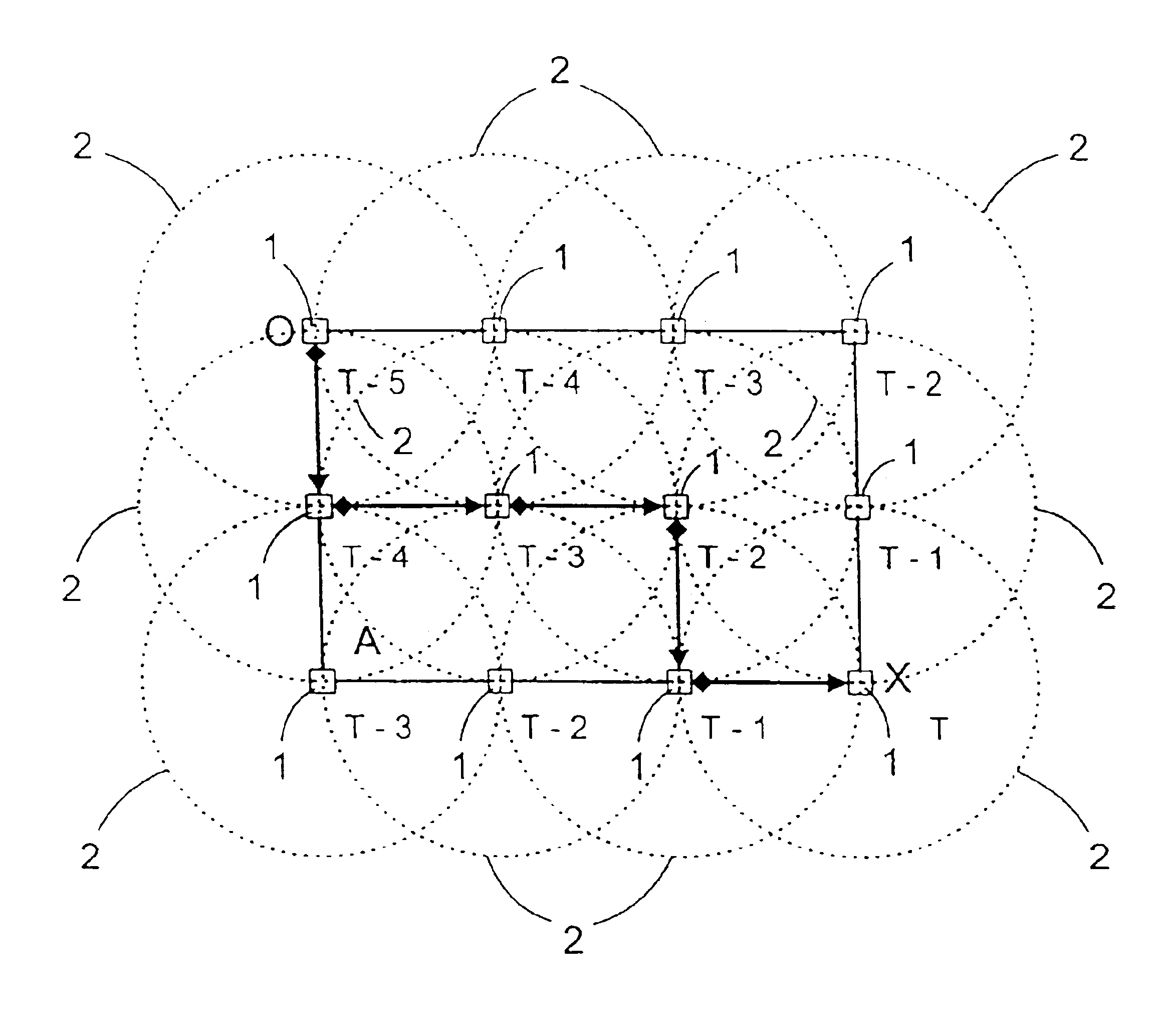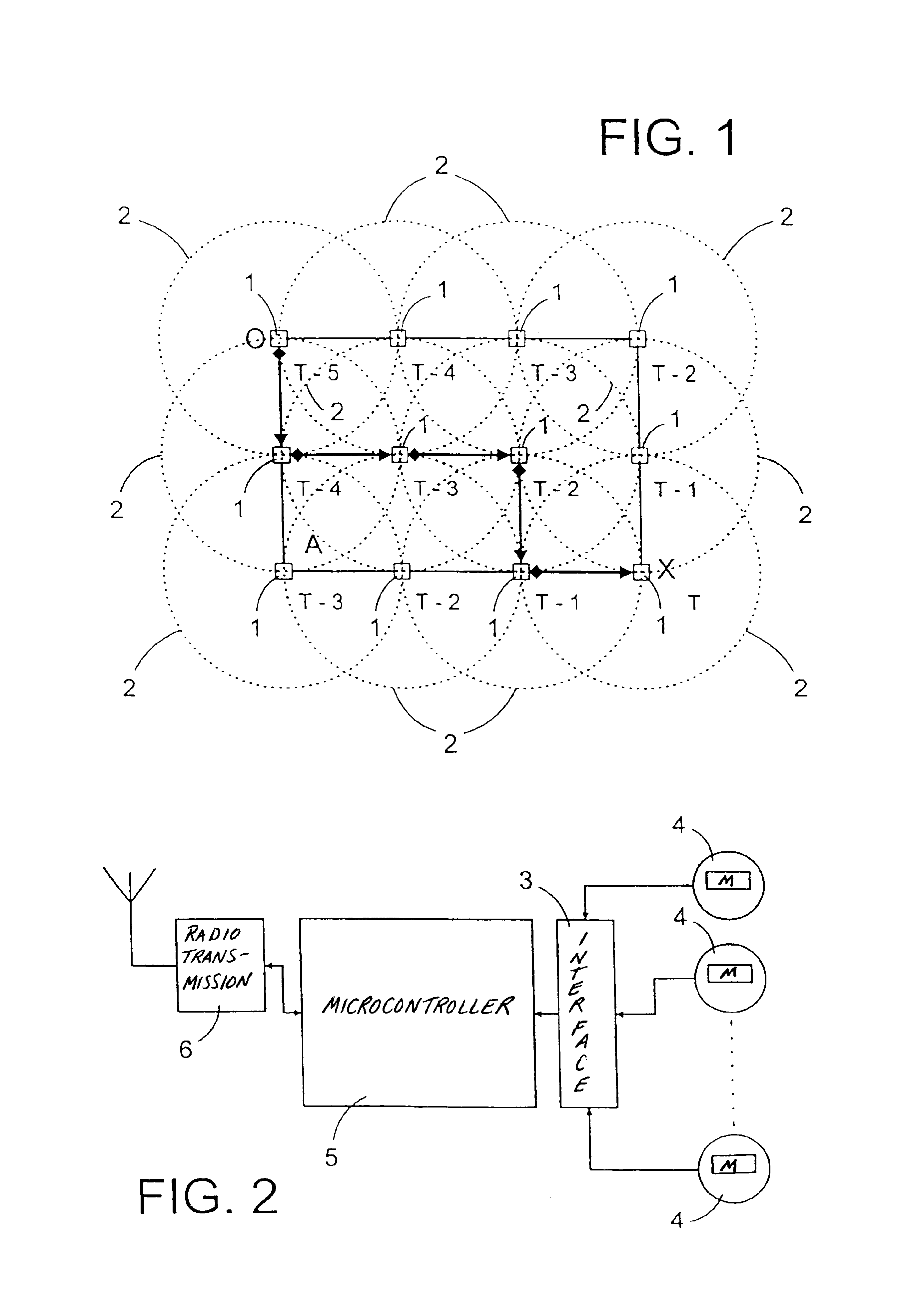System for automatic collection and transport of readings from water, gas and electricity meters
a technology of automatic collection and reading, applied in the field of automatic collection and transport of readings from water, gas and electricity meters, can solve the problems of difficult access, human error of the operative in taking the reading, and possible error of the personnel
- Summary
- Abstract
- Description
- Claims
- Application Information
AI Technical Summary
Benefits of technology
Problems solved by technology
Method used
Image
Examples
Embodiment Construction
[0017]The device of the invention overcomes the aforesaid disadvantages, while providing other advantages which will be described below.
[0018]The system for automatic collection and transport of readings from water, gas and electricity meters is characterized in that the at least one receiver element and one element to transmit (1) define an ad-hoc wireless network, self organizing in an area (A), where the readings are transmitted to the next element using multihop techniques according to a routing algorithm:[0019]A value t is assigned to the receiver elements, with maximum value T.[0020]If the direct neighbours of a given network node have as a maximum an assigned value t, a value t-k is assigned to this node, where k>0.[0021]Every node will transmit a message to a neighbouring node with t value larger than its own. If there is more than one with the same maximum value, it will transmit to one of them.
[0022]A system is thereby achieved for automatic collection and transport of rea...
PUM
 Login to View More
Login to View More Abstract
Description
Claims
Application Information
 Login to View More
Login to View More - R&D
- Intellectual Property
- Life Sciences
- Materials
- Tech Scout
- Unparalleled Data Quality
- Higher Quality Content
- 60% Fewer Hallucinations
Browse by: Latest US Patents, China's latest patents, Technical Efficacy Thesaurus, Application Domain, Technology Topic, Popular Technical Reports.
© 2025 PatSnap. All rights reserved.Legal|Privacy policy|Modern Slavery Act Transparency Statement|Sitemap|About US| Contact US: help@patsnap.com


